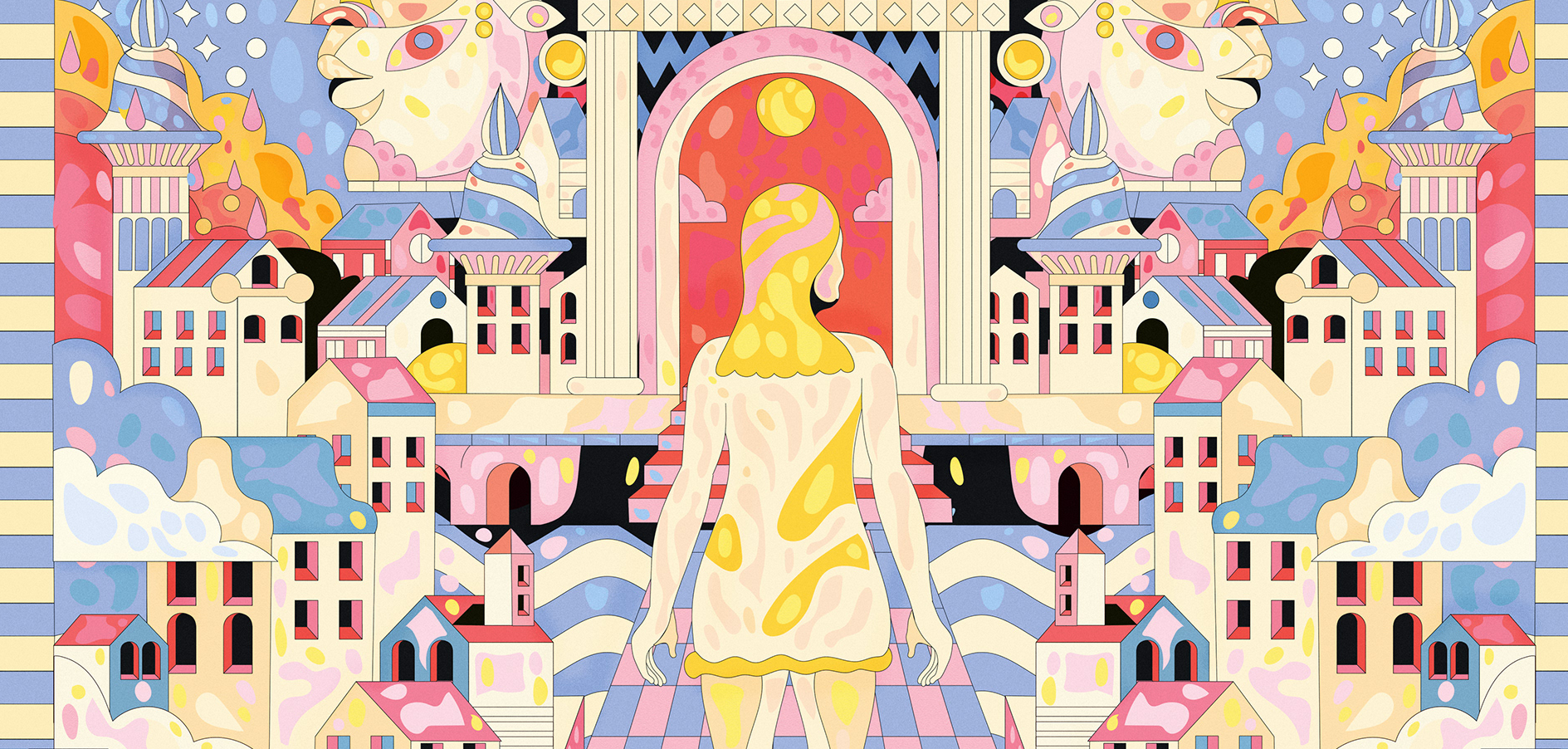In periods of ecological, political, and economic issues like our current times, it can feel like our actions are meaningless. Is it possible to trigger any change at all, as a simple individual?
“Change is the process of causing a function, practice, or thing to become different somehow, compared to what it is at present or what it was in the past. ”
Wanting to make change comes from the desire to make an impact, and shift a situation from one state to another. Some changes may happen organically (the only constant in life is change), but trying to change the status quo requires strategic thinking.
The decision to be involved in change, be it in your personal or professional life, starts by discovering how to activate your personal agency, which is the topic of this article, based on the Make Change course by the Unschool of Design, which I took a long time ago.
Artwork by illustrator Yo Az
Agency is the capacity of an individual to take action in a particular environment, where we can make free choices. These choices are affected by our worldview and the way we see ourselves, formed through our experiences, and the things we choose to learn and do.
Every action we take or don't take has an impact: the things we buy, the conversations we have, the work we do - it all has an impactful relationship with the world.
During our lives, we actually grow from having very little agency (most of our lives being decided by our parents as children), to being able to choose and create our own path. However, social structures and circumstances have a huge impact on one's agency, and the life you are born into can increase or decrease your “given” agency.
Being aware of the fact that we are inevitably affected by our context and situation, we can evaluate the scope and reach of what we can do, and increase the span of our actions where possible.
When motivated to create change around you, you may start by analyzing two things: the barriers to change and your sphere of influence.
Barriers to change
There are probably some external forces, structures, or people who are resistant to change. When seeking to affect change in a system, it's important to understand and acknowledge the forces at play so you can work around them.
Maybe people are afraid of change because they’ve grown used to the way things work. Maybe they find it too complicated or don’t want to feel silly in an unknown situation. Maybe they even feel personally attacked because they’ve grown to believe their values are tied to a certain behavior or situation.
Sometimes there are also vested interests in maintaining the status quo at play (powerful people, corporations, or governments can manipulate communication agendas or the enforcement of certain regulations, for example).
Identifying potential barriers up front gives us a better perspective to design a suitable framing to try to overcome them. This applies to complex issues (like climate change) as well as more “simple” ones (getting your client to consider an unconventional solution, or speaking with your dad about new technology).
Sphere of influence
A concept I really liked from the course was the definition of your “sphere of influence”, which is the space in which you have the ability and power to change things.
It combines with the knowledge you have, the people and communities you engage with, and the integrity you hold (which can relate to how much others value your point of view). Your sphere of influence is also the scope of the potential impact that your actions may or may not result in.
We all have some degree of influence and impact over the environments we inhabit.
“When we are kids, our sphere of influence is small, often restricted to our families, but it's potent because we often wield quite a bit of influence over them at this stage in our lives. Then, as a young adult, we expand to have a more significant influence on our friends and peer group (as they do on us), and this slowly grows out to colleagues and partners and then other communities, as time and experiences give us more agency and influence over the space we hold.”
The influence that we can each have is based on the amount of agency we cultivate and the integrity we build in ourselves over time.
Framework to map your sphere of influence, which starts from yourself and continues to expand outwards
Recommended exercise: map your personal sphere of influence (your family, friends, communities…). As an idea, you could also add some areas of change where you’d like to be more involved, and find new communities and people you could meet to share interests and work together with.
“A sphere of influence does not just tally up the number of people you know or the social network you have, although these are important in some cases of social influence (and important for personal connections). The key thing to influence is the integrity you hold and the trust that others have in your ability to influence within the space you hold.”
By working on identifying and expanding your agency and sphere of influence over time, you can find creative ways to leverage this into new ways of effecting positive change.
Personal notes and reflections
I’ve always been more on the introverted side, and although I’m not a person with a massive amount of friends and connections, I’m really proud of being able to say with confidence that the people close to me hold my perspective and thoughts in high regard and see me as a positive influence.
No one is perfect (neither myself obviously), but what I’ve been trying, and continue to aim for, is to cultivate through the years a sense of coherence and integrity.
Some things I’m currently doing to grow and activate my personal agency:
Going to more social events (even when I have to force myself a little because I’m tired or rather be in my bubble) where I could meet new people with potential interests in common. I’ve discovered that it’s always worth it.
Conversations with friends and acquaintances about all sorts of sustainability topics: materials, recycling, industrial challenges, and living in more conscious ways. My heart feels warm when I see they are the ones talking about it and promoting sustainability in a totally different context.
Debating with friends and especially family members, about social behaviors that were common in previous generations and contexts but are not fair and equitable if we analyze them. Tackling feminist topics with older members of my family who don’t think similarly has ultimately been very positive.
Being part of a local work group focused on Sustainable Architecture in the Col·legi d'Arquitectes de Catalunya, where we are researching how to incorporate environmental emissions and health impacts in national regulations for architecture.
Supporting the Right to Repair movement.
Sharing ideas through this blog and newsletter.
Joining communities like Climate Designers and Nesslabs, where I’ve met lovely people working on fascinating projects.
These are just a few ideas. I’d like to dedicate much more time to these initiatives but of course, time and energy are limited, and I’m not having much spare time recently. But anyway, the goal is to do the best you can, while maintaining your well-being and having fun!
Any activities or projects that you are currently working on to activate your agency? Feel free to reach out via Twitter, the newsletter or the website’s contact form :-) I’d love to hear about it!
References:
Make Change course by the Unschool of Design.
Louise, E., et.al. (2017) Beyond the roots of human inaction: Fostering collective effort toward ecosystem conservation. DOI: 10.1126/science.aal1931.
Banner artwork by: Yo Az







